Fencing Market Size
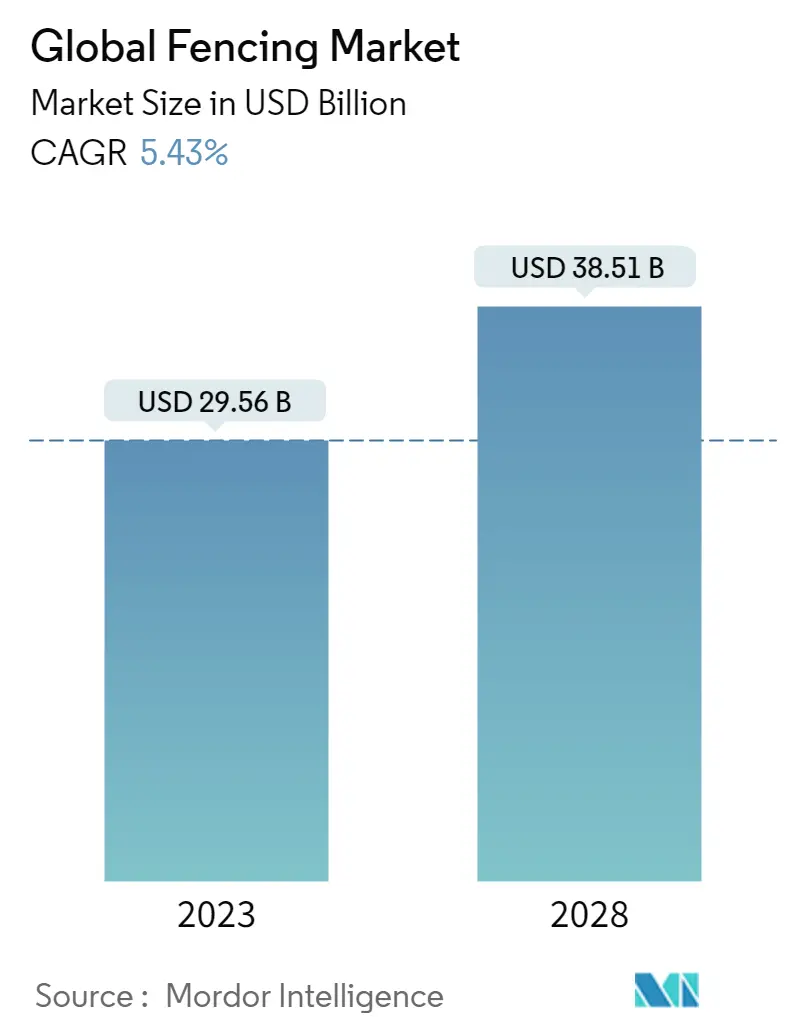
| Study Period | 2018- 2028 |
| Market Size (2023) | USD 29.56 Billion |
| Market Size (2028) | USD 38.51 Billion |
| CAGR (2023 - 2028) | 5.43 % |
| Fastest Growing Market | North America |
| Largest Market | North America |
Major Players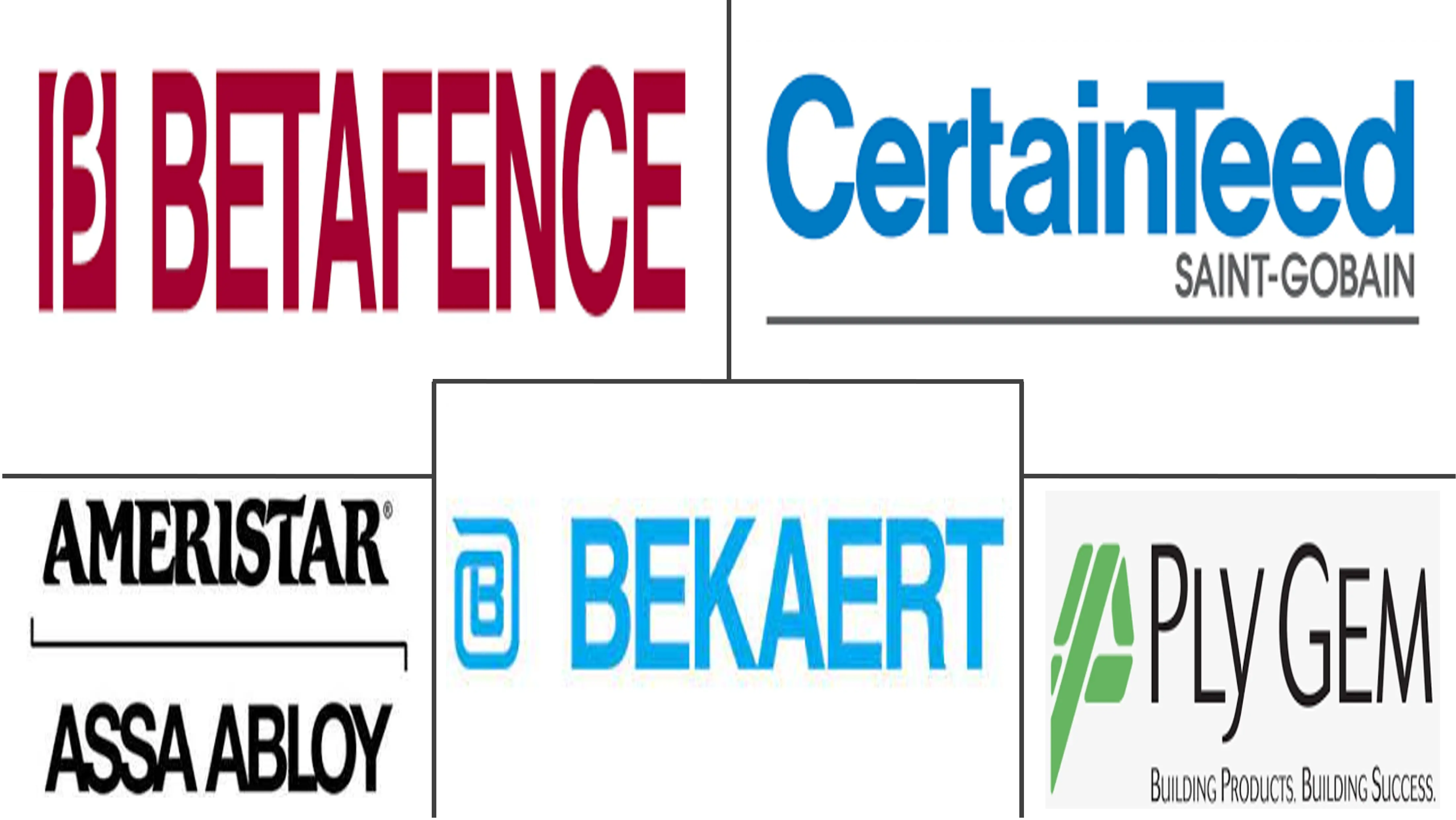
*Disclaimer: Major Players sorted in no particular order |
Need a report that reflects how COVID-19 has impacted this market and its growth?
Fencing Market Analysis
The Fencing Market size is expected to grow from USD 29.56 billion in 2023 to USD 38.51 billion by 2028, at a CAGR of 5.43% during the forecast period (2023-2028).
The rise in commercial and residential building projects is increasing the demand for fencing. Increasing demand for reliable and durable fencing systems in buildings has led to developments and innovations in manufacturing. The residential segment is witnessing growth in terms of new construction and renovations across the globe. It has been the driving force for the overall fencing market globally.
- Another thing that helps the market in the region is that manufacturing companies are always trying to improve their products to meet the needs of their customers.Overall, the markets in North America and Europe are being filled with the need to protect pets and also better bulwark against thefts and other forms of crime. The demand for renovation and retrofit projects is relatively high across Europe. Government-funded projects are focused on high-cost efficiency, thus increasing the demand for plastic fences.
- Asia-Pacific is a promising market for fencing. Comprising the fastest-developing countries in the world, including China and India, the region is expected to witness considerable investor attention. obstacles in the form of trade wars and an economic slowdown do prevail in Asia-Pacific, mainly in China and India. Low domestic demand in India is driving cuts in investments and production across the country. Also, the manufacturing sector in India has taken a toll, owing to several other economic factors in the country.
- Many military organizations employ an electric fence to prevent incursions close to international borders. China's military forces prefer to install spiked electric wires in the Ladakh region over the contentious border with India. The Russian military erected an electric fence around the China-Russia border to protect it. The greater emphasis on national security is thus anticipated to benefit market growth. Since it prevents wild animals from entering without authorization, an electric fence has a significantly greater influence on farm safety. The market is anticipated to expand as more farmers install electric fences to keep wild animals off their property. Regular inspections are necessary to ensure optimal performance, but they are challenging to carry out due to the high cost of improvements and maintenance associated with upgrading conventional electric fences. Heavy maintenance costs impede its expansion. In order to counteract the high fixed costs associated with the requirement to erect barriers over international boundaries, which may restrain market expansion, farmers are looking for other solutions, such as unmanned crossings.
- The market is divided into three segments based on applications: industrial, agricultural, and residential. In 2021, the residential sector will dominate the market. The segment's expansion is related to a rise in residential construction and remodeling. Rising levels of disposable income and the enormous importance that households place on security and privacy are driving this market. The market is anticipated to be driven by a rising desire for building distinctive fences and enhancing the aesthetic appeal of residential properties. The agricultural sector is anticipated to grow quickly throughout the course of the projection period. As more farms, crops, and farm animals are needed to be protected from wild animals and thieves, the demand for agricultural fences is anticipated to rise. The increase in agricultural invasions is what's causing the demand for agricultural fencing. Agricultural fences are usually built and manufactured according to customer specifications, utilizing high-quality raw materials.
Fencing Market Trends
Increase in demand for defence purposes by the countries
- Many trends are currently seen in the perimeter security sector, ranging from a considerable rise in physical deterrent systems, heavy fences, and bollards to a higher adoption of intelligent perimeter technology. As owners of factories, warehouses, rail yards, airports, and other buildings with valuables to protect try to regulate access to their properties, this rise is being fueled by a number of themes. Whilst crime is a crucial driver of the emergence of these trends, another element is a rising understanding and agreement that detection alone is not enough to secure sites. For this reason, intelligent perimeter security technologies that combine electrifying fences with the capacity to detect and alert companies to possible intruders while noticing the difference between them and wildlife are catching on with airport, rail, and truck yard operators.
- Demand for housing and home prices are expected to go down in 2023 because the economy is expected to shrink and people's budgets will get tighter. It is anticipated that fewer new housing projects will be built as a result. This is probably going to result in less demand for household fence solutions like railings. Construction projects for warehouses are anticipated to rise as online merchants demand additional space to retain stock, while the housing market may experience slower growth or perhaps a recession. Building companies will still be busy with commercial and industrial projects because internet shopping is expanding despite a decline in household finances. For warehouses housing precious stock, fencing systems like SR1-rated twin-wire mesh, 358 prison mesh, and ProFence palisade are necessary.
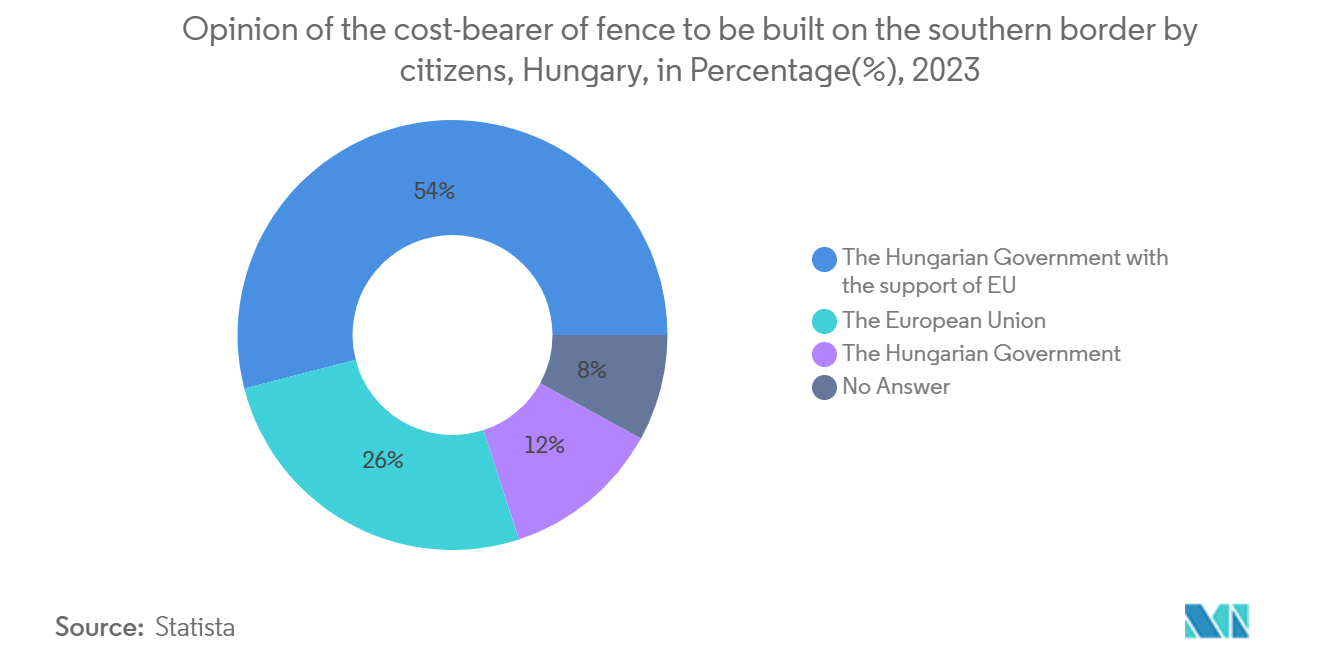
Increasing real estate construction driving the market
- In 2023, privacy is predicted to be a major issue, so more customers will choose board-on-board fences. This design uses vertically overlapping boards to block the view of your yard or house to keep off prying eyes. Similar to a slatwall, a stockade fence is made of long, flat wooden planks that are placed one on top of the other to form a plank wall. In addition to privacy concerns, this type of fencing is once again becoming popular because it was so uncommon to see it outside of rural areas. In 2023, more homeowners will want to update their fences using cost-effective eco-friendly fencing materials. As sustainability becomes more important, bamboo, biocomposite materials, and natural shrub/hedge barriers are all on the rise.
- The rise of the middle class is helping the expansion of the fencing business. According to the European Commission, by 2030, there will be 5.5 billion members of the emerging middle class. 87% of the growing middle-class population will be Asian. Rising home building and a rebound in building completions are driving the growth of the fencing sector. The expansion of the global fencing market is also being fueled by growth in the estate market, brought on by a rise in firms and greater investment in the construction sector. Regular inspections are necessary to ensure optimal performance, but they are challenging to carry out due to the high cost of improvements and maintenance associated with upgrading conventional electric fences. Its growth is hampered by hefty maintenance expenses. Farmers are seeking other solutions, like unmanned drones, to offset the high fixed costs linked with the necessity to deploy barriers over international boundaries, which may stifle market expansion.
- Rising urbanization is considerably contributing to the growth of the fence market. Urbanization is the term used to describe the widespread movement of people from rural to urban areas, which leads to higher human population densities in urban areas. Urbanization is increasing the demand for both residential and non-residential structures, which will advance the fence market. The expansion of the middle class is helping the fencing industry. Consequently, future fencing industry growth is anticipated to be fueled by rising urbanization.
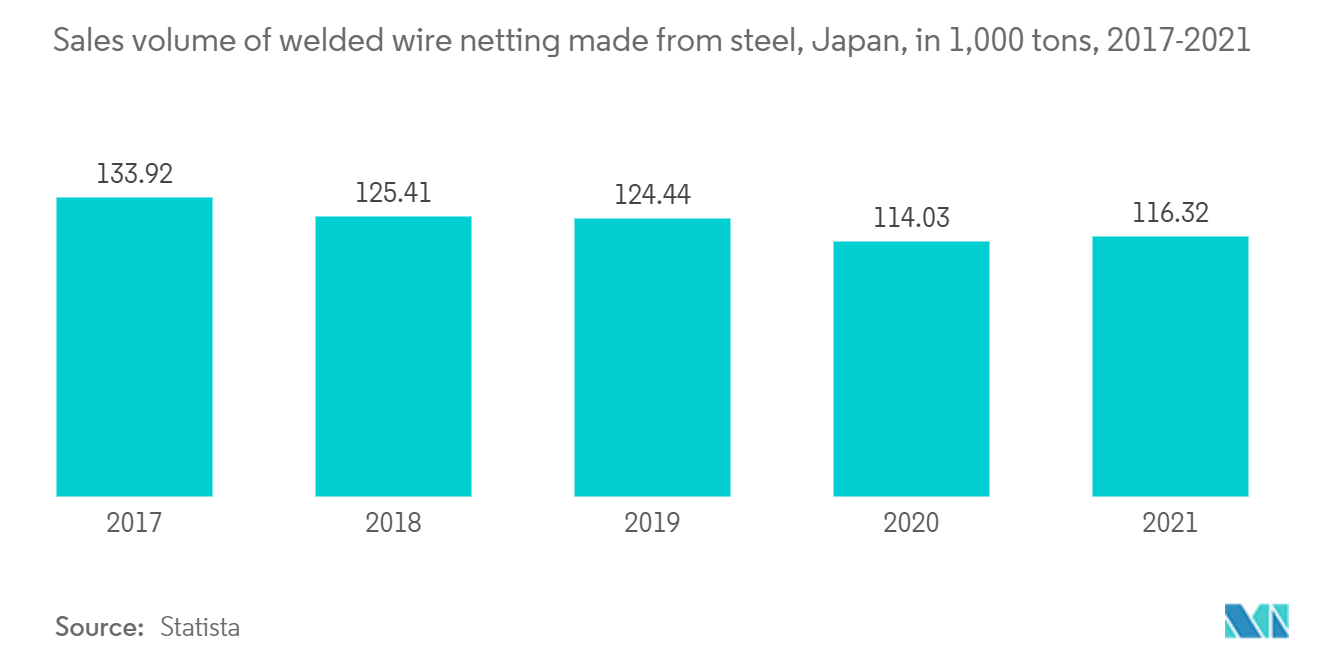
Fencing Industry Overview
The fencing market is fragmented, with many players present. The growth of residential fencing in new construction projects is a significant driver of new opportunities for the players. The major players are CertainTeed, PLY Gem, Bekaert, BetaFence, Ameristar Perimeter Security, and many more. Growing strategic partnerships and agreements among key manufacturers for market expansion are boosting the growth of the global fencing market. The industry participants have adopted various strategies, such as new product developments, partnerships, mergers and acquisitions, agreements, and collaborations, to achieve growth in the fencing market.
Fencing Market Leaders
CertainTeed
PLY Gem
Bekaert
BetaFence
Ameristar Perimeter Security
*Disclaimer: Major Players sorted in no particular order
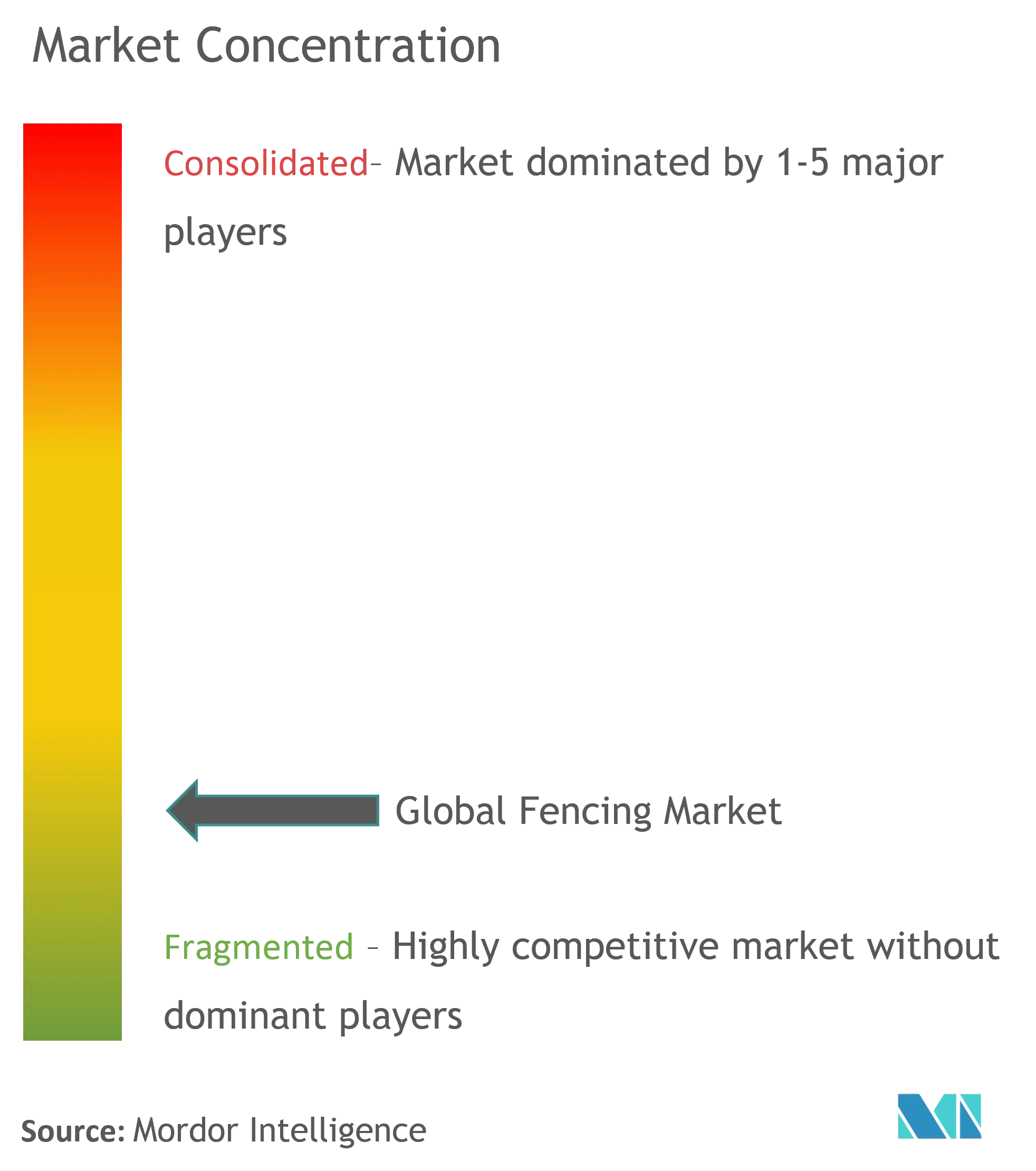
Fencing Market News
- February 2023: Crossplane Capital ("Crossplane"), a Dallas-based private equity firm, declared currently that it has joined forces with Sal Chavarria and the company's current management to purchase a controlling stake in Viking Fence ("Viking" or the "Company"), a top provider of fence rentals, sanitation rentals, fence installations, and additional building products and services to commercial and residential markets all over Texas.
- February 2023: A well-known, market-leading provider of fence and related goods and services, Phoenix Fence Corp. (the "Company" or "Phoenix Fence") has announced that TriWest Capital Partners ("TriWest") has acquired a controlling interest in the company. The company will continue to be managed by the current management group at Phoenix Fence. The USD 175 million Growth Fund's sixth platform investment by TriWest is Phoenix Fence (2021 vintage).
Fencing Market Report - Table of Contents
1. INTRODUCTION
1.1 Study Assumptions
1.2 Scope of the Study
2. RESEARCH METHODOLOGY
2.1 Analysis Methodology
2.2 Research Phases
3. EXECUTIVE SUMMARY
4. MARKET INSIGHTS
4.1 Current Market Scenario
4.2 Technological Trends
4.3 Insights on Supply Chain/Value Chain Analysis
4.4 Government Regulations
4.5 Insights on Materials Used for Fencing
4.6 Impact of COVID-19 on the Market
5. MARKET DYNAMICS
5.1 Drivers
5.2 Restraints
5.3 Opportunities
5.4 Industry Attractiveness - Porter's Five Forces Analysis
5.4.1 Bargaining Power of Suppliers
5.4.2 Bargaining Power of Consumers / Buyers
5.4.3 Threat of New Entrants
5.4.4 Threat of Substitute Products
5.4.5 Intensity of Competitive Rivalry
6. MARKET SEGMENTATION
6.1 By Type
6.1.1 Wood Fencing
6.1.2 Metal Fencing
6.1.3 Other Types
6.2 By End-User
6.2.1 Residential
6.2.2 Agricultural
6.2.3 Military & Defense
6.2.4 Government
6.2.5 Petroleum & Chemicals
6.2.6 Mining
6.2.7 Energy & Power
6.2.8 Warehouse
6.2.9 Other End-Users
6.3 By Geography
6.3.1 North America
6.3.1.1 United States
6.3.1.2 Canada
6.3.1.3 Mexico
6.3.2 Latin America
6.3.2.1 Brazil
6.3.2.2 Colombia
6.3.2.3 Argentina
6.3.2.4 Rest of Latin America
6.3.3 Europe
6.3.3.1 Germany
6.3.3.2 United Kingdom
6.3.3.3 France
6.3.3.4 Russia
6.3.3.5 Rest of Europe
6.3.4 Asia Pacific
6.3.4.1 China
6.3.4.2 Japan
6.3.4.3 India
6.3.4.4 South Korea
6.3.4.5 Rest of Asia Pacific
6.3.5 Middle East & Africa
6.3.5.1 Saudi Arabia
6.3.5.2 Egypt
6.3.5.3 South Africa
6.3.5.4 United Arab Emirates
6.3.5.5 Rest of Middle East & Africa
7. COMPETITIVE LANDSCAPE
7.1 Market Concentration Overview
7.2 Company Profiles
7.2.1 CertainTeed
7.2.2 PLY Gem
7.2.3 Bekaert
7.2.4 BetaFence
7.2.5 Ameristar Perimeter Security
7.2.6 Long Fence
7.2.7 Gregory Industries
7.2.8 A1 Fence Products
7.2.9 Specrail
7.2.10 Jerith*
- *List Not Exhaustive
8. MARKET OPPORTUNITIES AND FUTURE TRENDS
9. APPENDIX
9.1 Marcroeconomic Indicators (GDP breakdown by sector)
9.2 Key Production, Consumption, Exports & Import Statistics
Fencing Industry Segmentation
A fence is an artificially constructed barrier of any material or combination of materials erected to enclose or screen areas of land. A complete background analysis of the fencing market, including the assessment of the economy and contribution of sectors in the economy, a market overview, market size estimation for key segments, emerging trends in the market segments, market dynamics and geographical trends, and COVID-19 impact, is covered in the report.
The fencing market is segmented by type (wood fencing, metal fencing, and others), by end user (residential, agricultural, military & defense, government, petroleum & chemicals, mining, energy & power, warehouse, and other end-users), and by geography (North America, Latin America, Europe, Asia Pacific, and the Middle East & Africa). The report offers market size and forecasts in dollars (USD billion) for all the above segments.
| By Type | |
| Wood Fencing | |
| Metal Fencing | |
| Other Types |
| By End-User | |
| Residential | |
| Agricultural | |
| Military & Defense | |
| Government | |
| Petroleum & Chemicals | |
| Mining | |
| Energy & Power | |
| Warehouse | |
| Other End-Users |
| By Geography | |||||||
| |||||||
| |||||||
| |||||||
| |||||||
|
Fencing Market Research FAQs
How big is the Global Fencing Market?
The Global Fencing Market size is expected to reach USD 29.56 billion in 2023 and grow at a CAGR of 5.43% to reach USD 38.51 billion by 2028.
What is the current Global Fencing Market size?
In 2023, the Global Fencing Market size is expected to reach USD 29.56 billion.
Who are the key players in Global Fencing Market?
CertainTeed, PLY Gem, Bekaert, BetaFence and Ameristar Perimeter Security are the major companies operating in the Global Fencing Market.
Which is the fastest growing region in Global Fencing Market?
North America is estimated to grow at the highest CAGR over the forecast period (20221-2028).
Which region has the biggest share in Global Fencing Market?
In 20221, the North America accounts for the largest market share in Global Fencing Market.
Global Fencing Industry Report
Statistics for the 2023 Global Fencing market share, size and revenue growth rate, created by Mordor Intelligence™ Industry Reports. Global Fencing analysis includes a market forecast outlook to 2028 and historical overview. Get a sample of this industry analysis as a free report PDF download.
